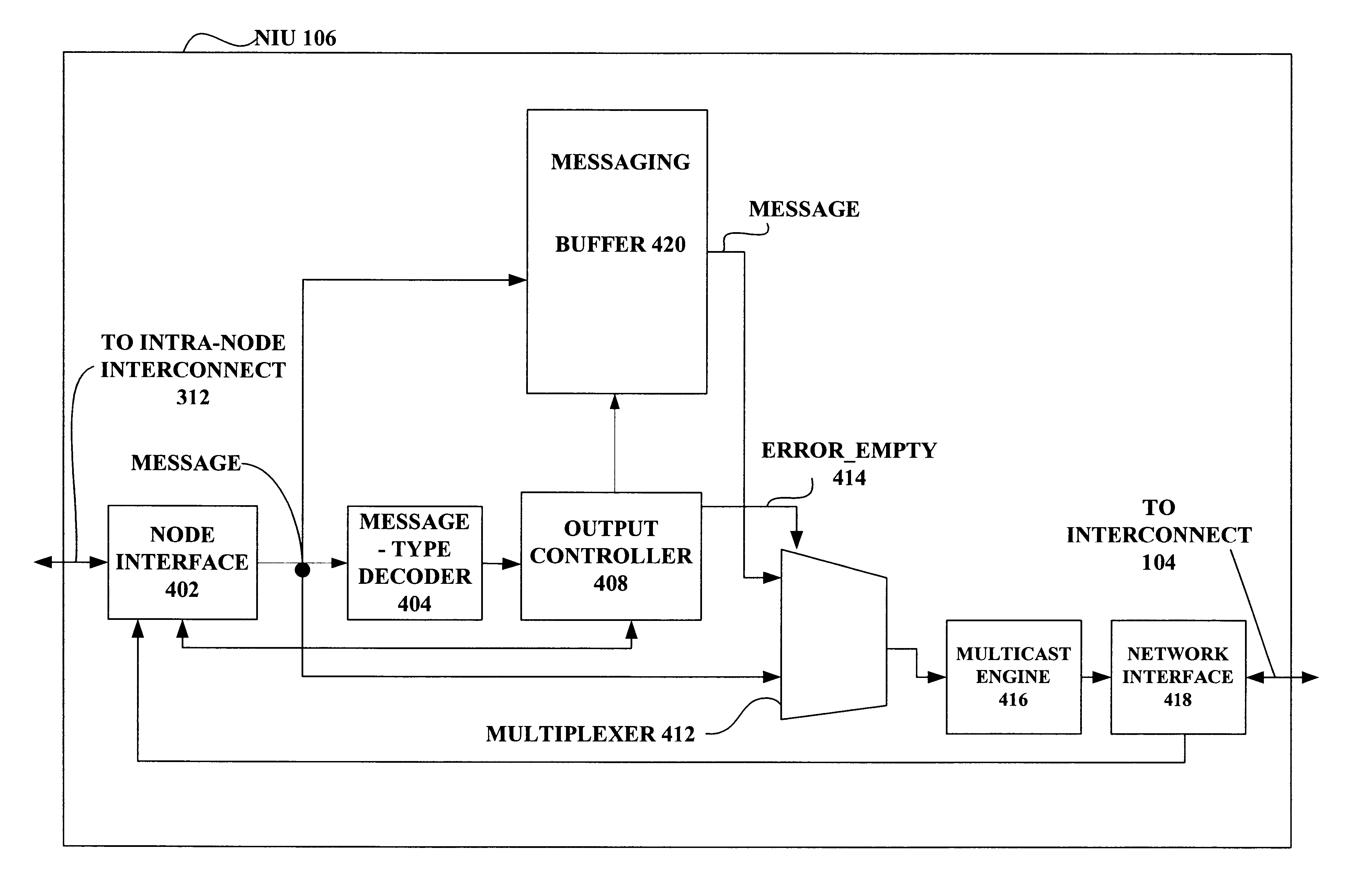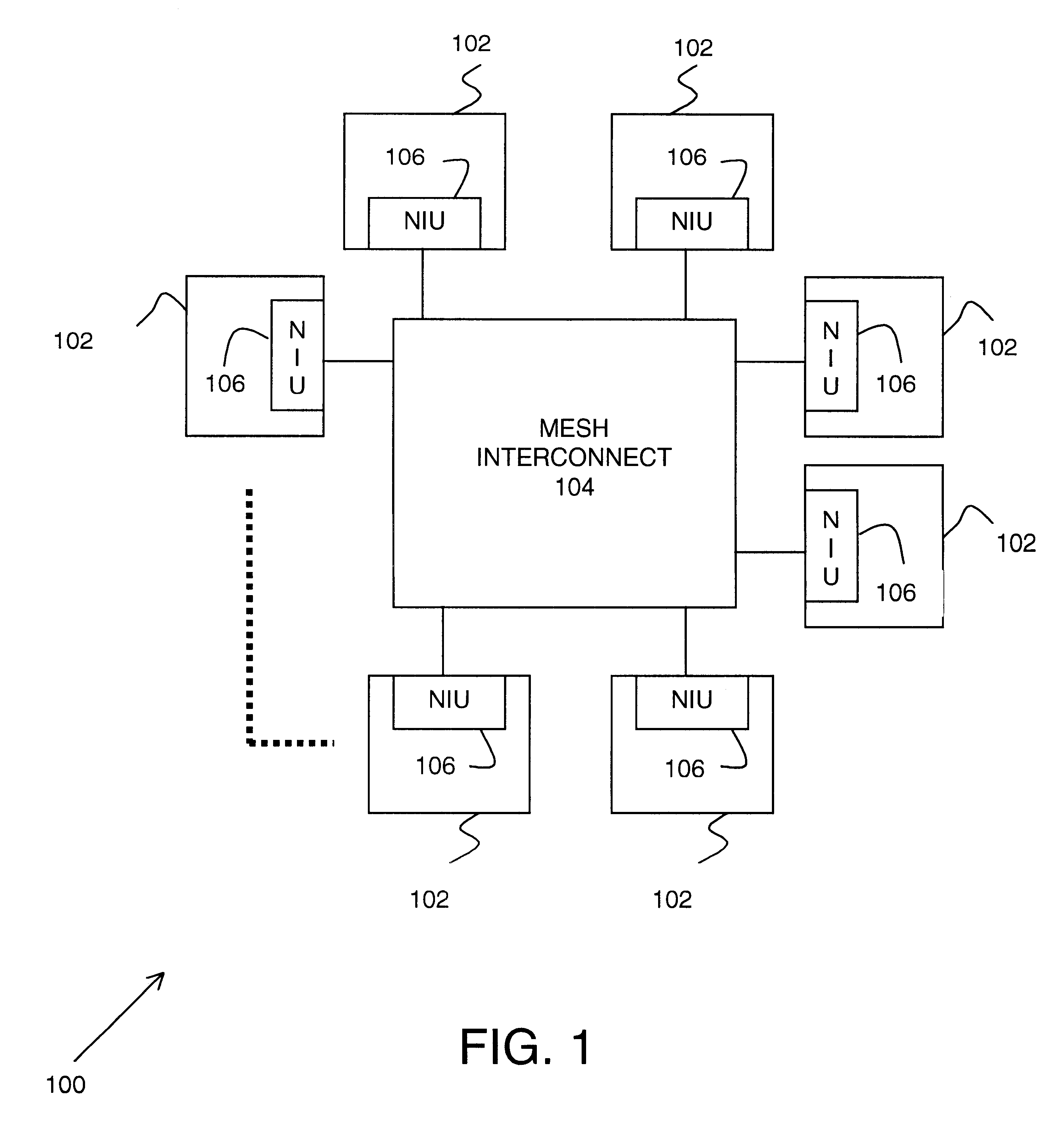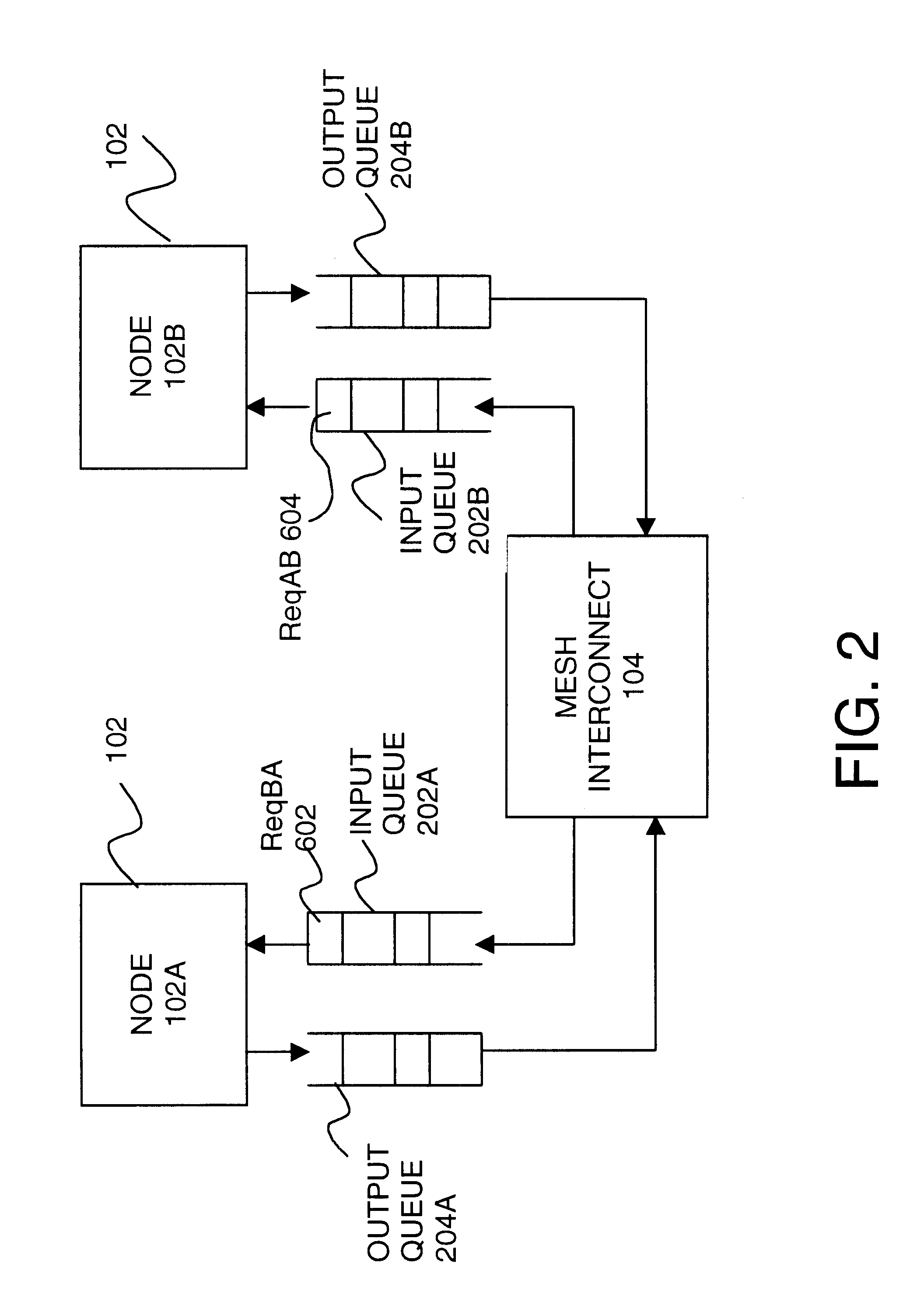System and method for avoiding deadlock in multi-node network
- Summary
- Abstract
- Description
- Claims
- Application Information
AI Technical Summary
Benefits of technology
Problems solved by technology
Method used
Image
Examples
Embodiment Construction
The present invention provides a computer architecture for avoiding deadlock while controlling messages between nodes in a multi-node computer network. The invention includes a messaging buffer having an optimum size pre-calculated to temporarily store outgoing messages from a node. The messages are classified according to their service requirements and messaging protocols, and reserved quotas in the messaging buffer are allocated for different types of messages. The reserved quotas are controlled by a mechanism that, to prevent overflow, limits the maximum number of messages that can be outstanding at any time. The messaging buffer is large enough to guarantee that a node is always able to service incoming messages, thereby avoiding deadlock and facilitating forward progress. The buffer may be bypassed to improve system performance when the buffer is empty or when data in the buffer is corrupted. In addition, a multicast engine receives information from a message header to determin...
PUM
 Login to View More
Login to View More Abstract
Description
Claims
Application Information
 Login to View More
Login to View More - R&D
- Intellectual Property
- Life Sciences
- Materials
- Tech Scout
- Unparalleled Data Quality
- Higher Quality Content
- 60% Fewer Hallucinations
Browse by: Latest US Patents, China's latest patents, Technical Efficacy Thesaurus, Application Domain, Technology Topic, Popular Technical Reports.
© 2025 PatSnap. All rights reserved.Legal|Privacy policy|Modern Slavery Act Transparency Statement|Sitemap|About US| Contact US: help@patsnap.com



